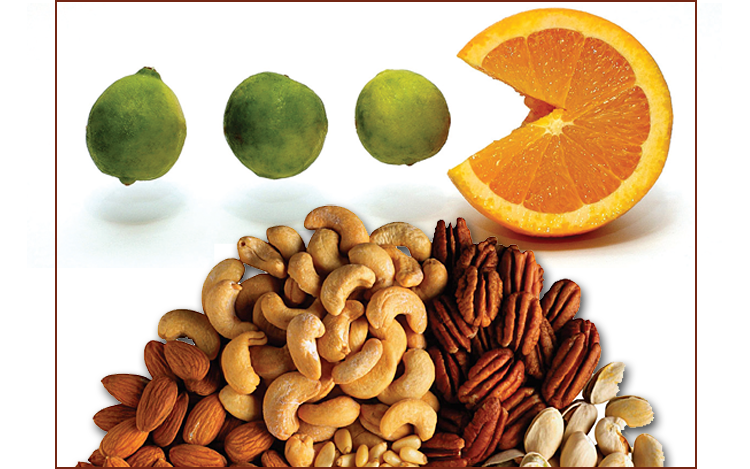SOME DAYS you just don’t feel like doing much. That’s normal. If most days are like that, it’s not normal. You could have clinical depression. A visit to your doctor is in order for a proper diagnosis. Many diseases can have symptoms similar to depression and you or a well-meaning friend or relative are not qualified to give your problem a name.
But, let’s say you are just feeling down in the dumps. Eating proper foods can be an easy step to get you on the path to feeling better. According to WebMD, you should have a diet that is balanced and full of nutrients. That’s what we should all be eating. We need vitamins, minerals, carbohydrates, protein, and a little fat. Simple? It is if you want it to be and make it happen.
Free radicals run rampant in our bodies and are considered the bad guys of aging, cell damage, and dysfunction. They like to go after the brain. Antioxidants are the good guys, racing around our bodies gobbling up the bad guys … sort of like Pacman with a healthy purpose. Beta-carotene, vitamin C and vitamin E are the soldiers you want on your side.
Get beta-carotene from apricots, broccoli, cantaloupe, carrots, collards, peaches, pumpkin, spinach, and sweet potato. For vitamin C, eat blueberries, broccoli, grapefruit, kiwi, oranges, peppers, potatoes, strawberries, and tomato. For vitamin E, head straight for nuts and seeds, vegetable oils, and wheat germ.
Carbohydrates often get a bad rap. Don’t turn thumbs down on carbs. They are good for us and our bodies need them. What we don’t need is the carbs in doughnuts, cake, candies, cookies, and simple sugars. Go for whole grains, fruits, and vegetables. Instead of a slice of cake for dessert, enjoy a sliced juicy peach topped with crushed nuts or a spoonful of low-sugar granola and a dollop of fat-free yogurt.
Mid-afternoon can be the time of the day when you feel blah. Just a little down and groggy. You need a pick-me-up. Nix the candy or soda and reach for a slice of turkey or a piece of chicken. A chunk of low-fat cheese works, too. So do beans and peas, lean beef, fish, milk, soy products, and yogurt.
A Spanish study found a link between depression and lack of enough folate and vitamin B12. The Mediterranean diet is high in staples such as legumes, nuts, many fruits, and dark green vegetables, fish and low-fat dairy products. Just what we need. Get out an Italian cookbook and go to it.
It’s hard to imagine vitamin D deficiency in Florida. We are the Sunshine State. But we’re also the hot-as-the-devil state, and we spend a lot of time in air conditioning. Cool, inside air doesn’t supply vitamin D. Studies have found lack of vitamin D linked to depression. Depressed people who lack vitamin D have gotten better with increased intake.
A cup of two percent milk has 25 percent of the vitamin D that we need in a day. A cup of fat-free Greek yogurt has the same amount. If you don’t like milk, you can turn it into rice pudding with cooked brown rice, a couple of eggs, cinnamon and nutmeg and some raisins for sweetening. Mix a little vanilla with Greek yogurt and it’s not as tart.
We need selenium to be healthy. Too little selenium has been associated with poor moods. Ideal intake is 55 micrograms a day for adults. You can get that in a couple of Brazil nuts. Look for selenium in beans and legumes, lean meat (lean pork and beef, skinless chicken, and turkey), low-fat dairy products, nuts and seeds (particularly Brazil nuts), seafood (oysters, clams, sardines, crab, saltwater fish, and freshwater fish), whole grains (whole-grain pasta, brown rice, oatmeal, etc.).
We need omega-3 fatty acids. Studies have found too little omega-3 can lead to depression. People with ample omega-3 have less depression. You can get omega-3 from fatty fish such as mackerel, sardines, tuna, and salmon. Other sources of omega-3 are flaxseed, canola oil, soybean oil, walnuts, and dark green leafy vegetables. Whip up a tasty salad from a can of fish or leftover salmon, mayo, chopped walnuts or Brazil nuts, some raisins or Craisins, and pineapple. Serve it in a hollowed red, juicy tomato or with whole wheat crackers or on dark romaine leaves.
Now you have all sorts of goodies on one plate. It was simple to make (one bowl to wash), tasty, and very healthy.
CREDIT
article by by TRENT ROWE
Trent Rowe is the food editor of Central Florida Health News.
